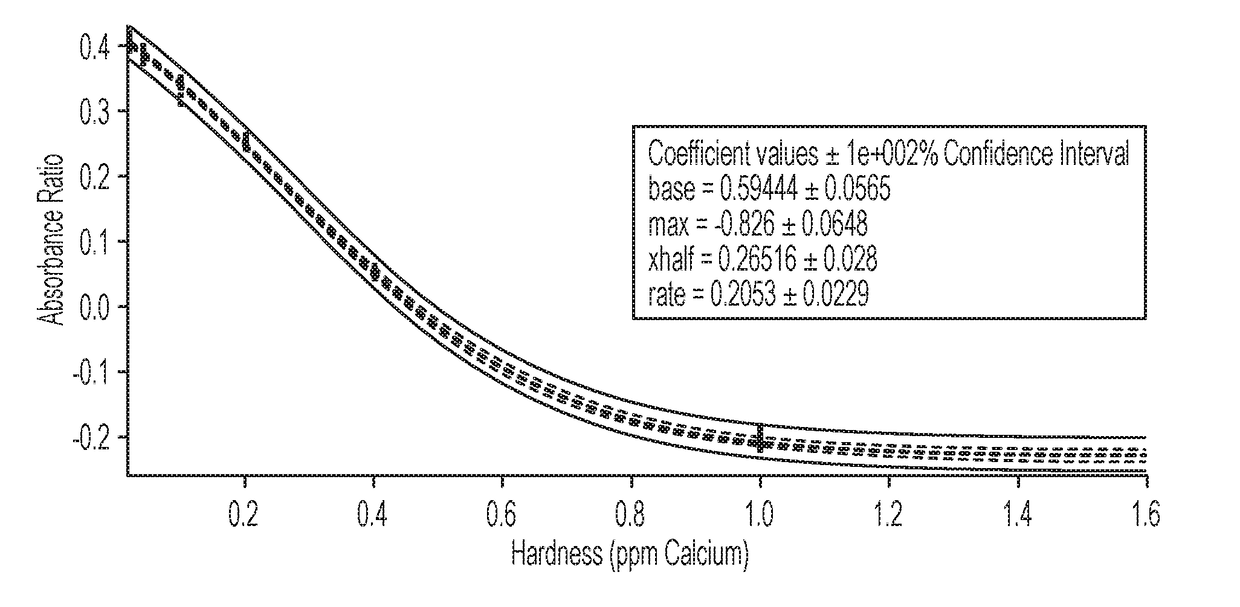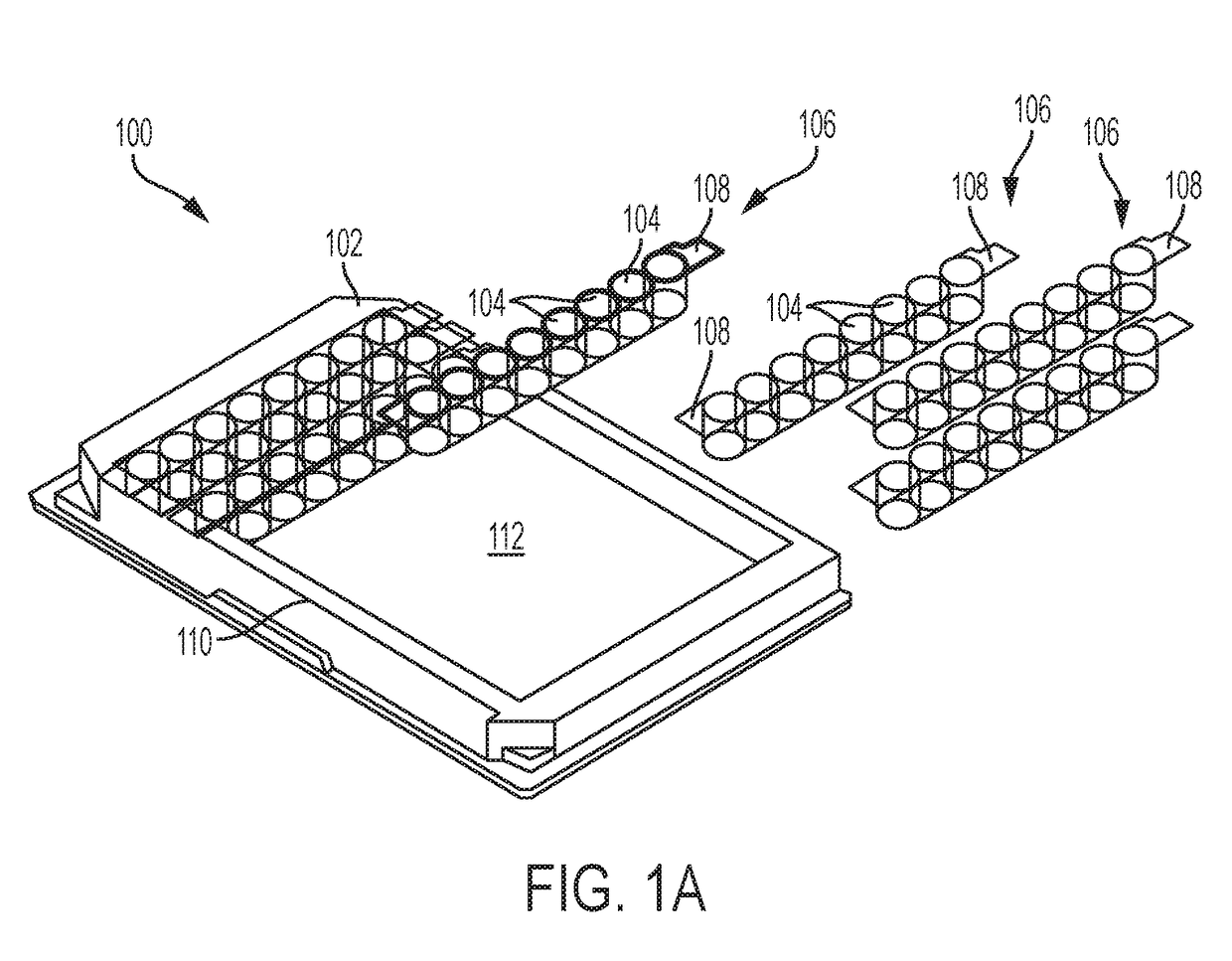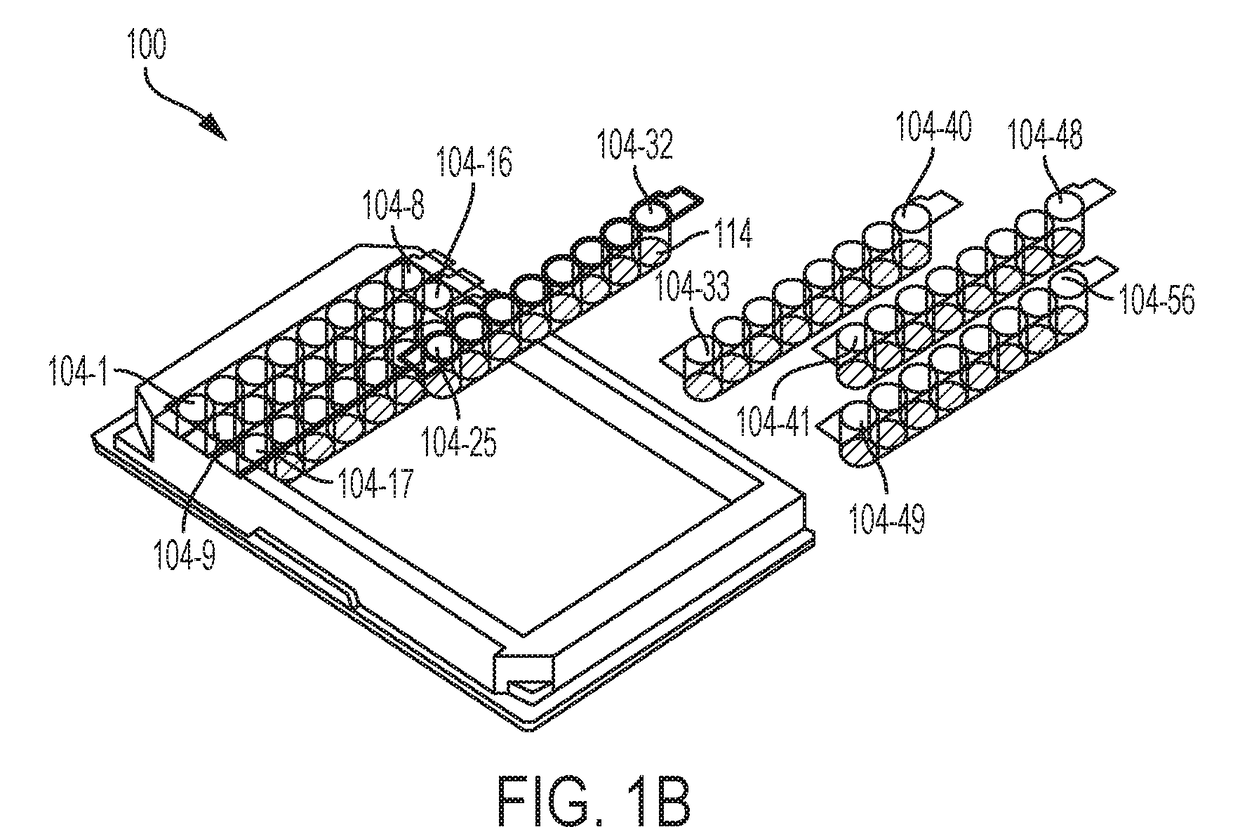Compositions, apparatus, and methods for determining hardness of water and magnesium ion in an analyte composition
- Summary
- Abstract
- Description
- Claims
- Application Information
AI Technical Summary
Benefits of technology
Problems solved by technology
Method used
Image
Examples
example 2
Determination of Hardness in a Water Body
[0047]Hardness Assay—Analyte compositions (300 microliters) containing an unknown amount of hardness were added to 7 microwells of the 96-microwell plate prepared in Example 1. After dissolution of the lyophilized sample, the microwell plate was positioned in a plate reader and the absorbance value of the plate was determined.
[0048]The absorbance value was plotted against the calibration curve. The absorbances are plotted as a function of the absorbances determined from the following equation:
(620 nm / 560 nm)−(520 nm / 560 nm).
Table 3 shows how the current hardness assay compares to two different third party labs running ICP-MS (Lab 1) and ICP-OES (Lab 2). Each of the samples is from an oil field water well.
TABLE 3WaterSample IDLab 1Lab 2Lens#0116,8365,8646,705#01220,02817,20118,342#0148,5297,4379,450#018262254289#034950861921#035999898935
example 3
[0049]Composition
TABLE 4for 1 Lfor 2 Lfor 5 Lfor 10 LCalmagite144 mg288mg720mg1440mgCAPS (free)33.2g66.4g166g332gPEG 4000 (flakes)60g120g300g600gTriton ™ X-100 1mL2mL5mL10mL(10% solution)
[0050]The reagents in Table 4 were combined for a selected volume with distilled water and diluted to approximately 75% of the desired batch size with agitation. pH and temperature probes (for ATC) of a calibrated pH meter were inserted into the solution. The pH was slowly adjusted to a pH of 10.2 using concentrated (3-30%) sodium hydroxide prepared from ACS reagent grade sodium hydroxide and distilled water. The solution was diluted up to approximately 95% of the batch size with distilled water, the pH monitored, and then transferred to an appropriately sized volumetric flask. The solution container was washed several times with small washes of distilled water and transferred to the flask. Sufficient distilled water was added to bring the total volume of solution to a desired amo...
example 4
Determination of Magnesium in a Water Body
[0053]Magnesium Assay—Analyte compositions (300 microliters) containing an unknown amount of magnesium were added to 7 microwells of the 96-microwell plate prepared in Example 3. After dissolution of the lyophilized composition, the microwell plate was positioned in a plate reader and the absorbance value of the plate was determined.
[0054]The absorbance value was plotted against the calibration curve. FIG. 4 is a plot of the calibration curve. Table 5 shows how the current magnesium assay compares to two different third party labs running ICP-MS (Lab 1) and ICP-OES (Lab 2). Each samples is from an oil field water well.
TABLE 5WaterSample IDLab 1Lab 2Lens#011307230309#012656608756#014391301488#018272526#034142126149#035454047
[0055]As discussed throughout this specification, an additional embodiment that is contemplated is the combination of the hardness assay kit with the magnesium assay kit. Such an embodiment can be practiced by including bo...
PUM
 Login to View More
Login to View More Abstract
Description
Claims
Application Information
 Login to View More
Login to View More - R&D
- Intellectual Property
- Life Sciences
- Materials
- Tech Scout
- Unparalleled Data Quality
- Higher Quality Content
- 60% Fewer Hallucinations
Browse by: Latest US Patents, China's latest patents, Technical Efficacy Thesaurus, Application Domain, Technology Topic, Popular Technical Reports.
© 2025 PatSnap. All rights reserved.Legal|Privacy policy|Modern Slavery Act Transparency Statement|Sitemap|About US| Contact US: help@patsnap.com



